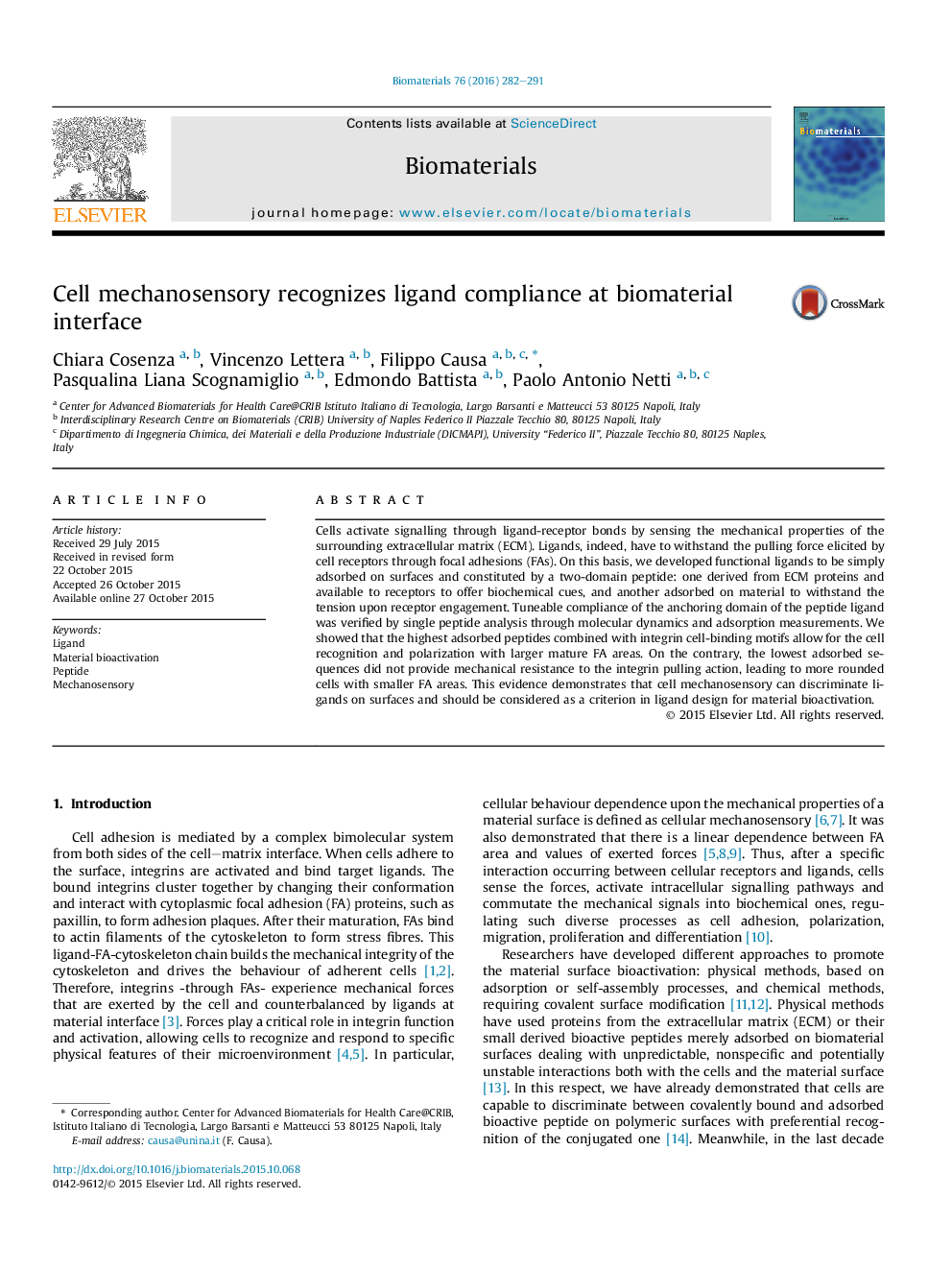| Article ID | Journal | Published Year | Pages | File Type |
|---|---|---|---|---|
| 6485283 | Biomaterials | 2016 | 10 Pages |
Abstract
Cells activate signalling through ligand-receptor bonds by sensing the mechanical properties of the surrounding extracellular matrix (ECM). Ligands, indeed, have to withstand the pulling force elicited by cell receptors through focal adhesions (FAs). On this basis, we developed functional ligands to be simply adsorbed on surfaces and constituted by a two-domain peptide: one derived from ECM proteins and available to receptors to offer biochemical cues, and another adsorbed on material to withstand the tension upon receptor engagement. Tuneable compliance of the anchoring domain of the peptide ligand was verified by single peptide analysis through molecular dynamics and adsorption measurements. We showed that the highest adsorbed peptides combined with integrin cell-binding motifs allow for the cell recognition and polarization with larger mature FA areas. On the contrary, the lowest adsorbed sequences did not provide mechanical resistance to the integrin pulling action, leading to more rounded cells with smaller FA areas. This evidence demonstrates that cell mechanosensory can discriminate ligands on surfaces and should be considered as a criterion in ligand design for material bioactivation.
Keywords
Related Topics
Physical Sciences and Engineering
Chemical Engineering
Bioengineering
Authors
Chiara Cosenza, Vincenzo Lettera, Filippo Causa, Pasqualina Liana Scognamiglio, Edmondo Battista, Paolo Antonio Netti,
